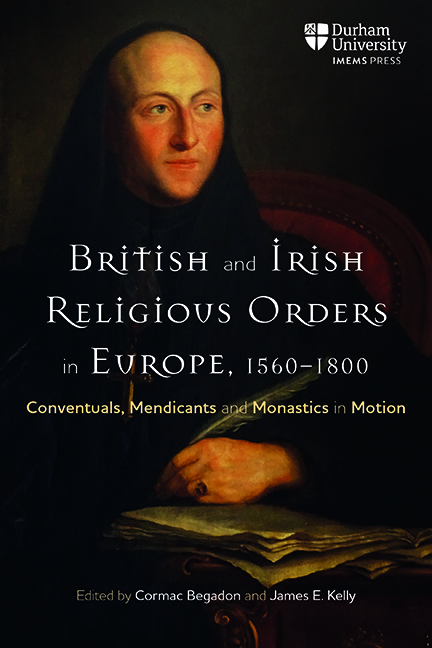 British and Irish Religious Orders in Europe, 1560-1800
British and Irish Religious Orders in Europe, 1560-1800 1 - Cloistered yet Militant: Commitment to Englishness in Seventeenth-Century Convents in Exile on the Continent
Published online by Cambridge University Press: 07 October 2022
Summary
When they fled the Dissolution of the Monasteries and moved abroad in 1539, the Bridgettine nuns of Syon Abbey ensured the survival of their community. All the other convents of England were dissolved. In 1594, after years of peregrinations, the Bridgettines finally settled in Lisbon, a safe but remote location, far from the island they had left behind. For the women who aspired to religious life closer to home, there was no choice but to enter continental convents. Many English aspirants chose to enter monasteries in the north of France or in the Spanish Netherlands, just across the Channel. There, they cohabited with French, Dutch and Spanish religious, whose language they did not always speak and whose customs, temperaments and diet sometimes felt alien to them. Embracing a cloistered life was always demanding. The twenty-fifth session of the Council of Trent in 1563 promulgated that all religious women were to observe strict enclosure and have no contact with either friends or family. The rules of the respective orders and the constitutions and statutes of the community imposed strict guidelines on every aspect of life, leaving very little to personal freedom. Yet, for English nuns in European communities, the process of adjusting to the requirements of religious life was complicated further. Anne (Anne of the Ascension) Worsley’s biographer recalled that, when she entered the Spanish Carmel at Mons in 1609, ‘life in the Spanish community where the characters so differed from her own, and the manners and customs were so unlike those of her home life, insensibly operated to develop her characteristically English reserve.’ Worsley, we are told, felt unable to integrate fully as a member of her new spiritual family. Increasingly, aspirants articulated their desire to serve the Roman Church in specifically English cloisters and in 1598, after a hiatus of over sixty years, the first English Benedictine convent founded in exile -in Brussels -heralded an era of monastic revival, which witnessed the flourishing of another twenty cloisters for English women between that year and 1678.
As they stabilised into long-lasting settlements, those communities found a place in their local neighbourhoods, but they never became assimilated to the point of completely erasing their Englishness.
- Type
- Chapter
- Information
- British and Irish Religious Orders in Europe, 1560-1800Conventuals, Mendicants and Monastics in Motion, pp. 21 - 42Publisher: Boydell & BrewerPrint publication year: 2022


